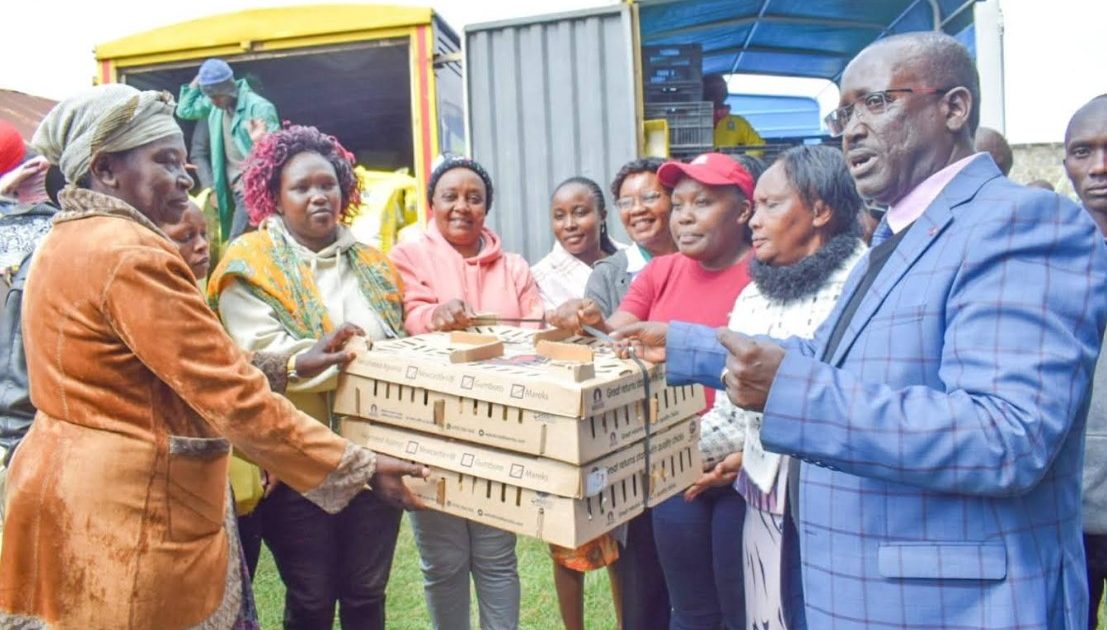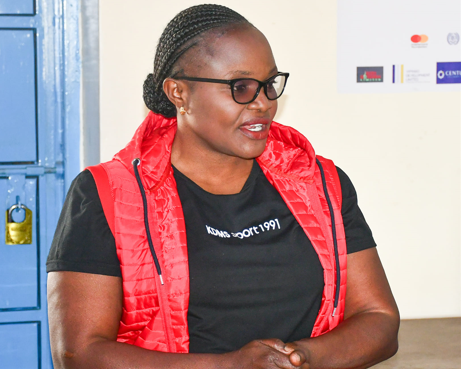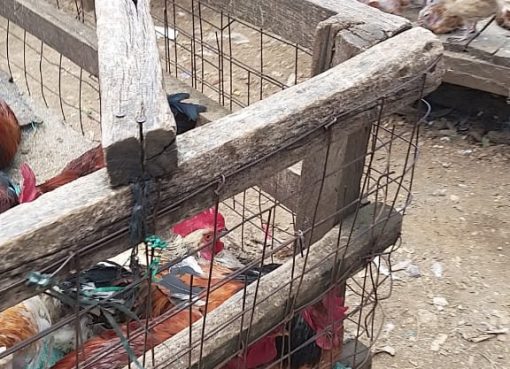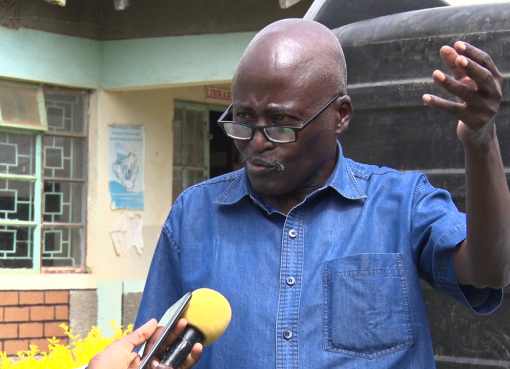Poultry farmers in four wards within Nakuru are set to receive 6,525 dual-purpose improved breeds of chicks that guarantee low cost of maintenance and higher earnings.
This comes against a background of increased cost of production for broiler and layer varieties due to various challenges bedevilling the subsector, including disease susceptibility and high mortality rates of the birds, costly infrastructure needed for the venture and the prohibitive cost of feed.
Through the Kenya Livestock Commercialisation Project (KeLCoP), the farmers from Maai Mahiu, Gilgil, Solai, and Soin wards will further benefit from a donation of 372 pullets (hens less than one year old) and 124 cockerels in an initiative aimed at enhancing livestock commercialisation and improving livelihoods in rural households in Kenya.
According to County Livestock, Fisheries, and Veterinary Services Chief Officer, Dr Michael Cheruiyot, the one-day-old dual-purpose chicks raised for both meat and eggs were known for their hardiness, faster growth and higher egg and meat production compared to traditional indigenous breeds.
Dr Cheruiyot noted that improved chicken breeds offer a balance of resilience and productivity, as they are well-suited to local conditions, can handle free-range farming and are known to be efficient feeders, requiring less commercial feed.
These factors, he added, subsequently lead to increased incomes for small-scale poultry farmers.
The Chief Officer disclosed that through the initiative, 10 farmer groups in the targeted wards had further received 212 bags of Chicken mash and 219 bags of Kienyeji mash.
The Kenya Livestock Commercialisation Project (KeLCoP), which started on March 5, 2021 with a completion date of March 31, 2027 is funded by the Government of Kenya, the International Fund for Agricultural Development (IFAD), and Heifer International.
The six-year project is being funded at a cost of at least Sh180 million, translating to about Sh30.5 million annually. It focuses on three major value chains that include dairy goat and poultry farming and beekeeping.
It is being implemented by the Agriculture Ministry through the State Department of Livestock Development in partnership with County Governments of Nakuru, Baringo, Siaya, Busia, Elgeyo Marakwet, Bungoma, Samburu, Marsabit, Trans Nzoia and Kakamega.
KeLCoP focuses on increasing incomes for small-scale livestock farmers by improving access to markets, animal health services, and better management practices.
The project aims to empower farmers, especially women and youth, to boost their poultry businesses.
Dr Cheruiyot indicated that Nakuru was closely working with KeLCoP to actively promote poultry towards enhancing rural livelihoods and boosting the agricultural sector.
“Our partnership with KeLCoP focuses on improving income, food, and nutrition security for livestock and pastoralist households, especially youth and women, in an environmentally friendly manner. It is part of a broader effort to promote job creation and encourage small-scale poultry farming in line with Governor Susan Kihika’s Manifesto,” stated the Chief Officer.
He added, “The initiative is affording farmers improved access to markets, animal health services, and better management practices. The project recognises poultry as a key livestock value chain and actively supports smallholder farmers involved in poultry production.”
Dr Cheruiyot indicated that KeLCoP has significantly benefited poultry farmers in the County by providing training, resources, and market linkages, ultimately boosting their incomes and improving their livelihoods.
The project he added focuses on empowering smallholder farmers, including women and youth, in the poultry value chain, helping them transition to commercial production.
The Chief Officer indicated that through the partnership with KeLCoP, the County government had made significant strides in developing and strengthening the entire poultry value chain, from production to marketing and promoting climate-resilient and sustainable farming practices that help poultry farmers adapt to climate change.
“KeLCoP utilises a community-based approach, working with farmer groups and local stakeholders to implement its interventions.
We have been focusing on various aspects, including animal health, fodder production, and market infrastructure development, aiming to transform the livestock sector and contribute to the overall economic growth of the area,” added Dr Cheruiyot.
He said that all the beneficiaries had received basic training in poultry care and would get further support from ward livestock officers to help in improving breeding and multiplication of their indigenous chickens.
KeLCoP Coordinator, Mr Paul Busienei, urged the farmers to ensure they work closely with the extension officers for advice on proper agronomic practices to ensure there’s no mortality of the chicks.
Mr Busienei stated that chickens have many diseases that the farmer needs to worry about.
“There are viral, bacterial, and fungal. Others are nutrition deficiency-based,” he said.
The main diseases that affect chickens, he noted, are Newcastle, Marex, Gumboro, infectious bronchitis, and salmonella, among others.
“The one-day-old chicks we donate are pre-vaccinated against Marex, Newcastle, and Gumboro diseases. Poultry business is lucrative. If you invest in it and do it right, you’ll get some returns,” stated the coordinator.
He explained that the project was designed to promote urban agriculture while ensuring the use of limited available space to feed the growing population in urban centers.
“Our ultimate goal is to achieve food security and nutrition as well as create employment for the vulnerable groups,” Mr Busienei elaborated.
According to the Ministry of Agriculture, the chicken enterprise in Kenya contributes four per cent of the agricultural Gross Domestic Product. The sector supports about 3.6 million households.
It is estimated that the chicken population in the country is 63 million against a world population of about 35 billion.
The programme targets to have farmers rear improved Kienyeji Chicken varieties that start laying eggs only five months after being hatched and produce an average meat weight of 1.5kg, while a cock should weigh at least 2 kg.
The farmers are expected to use the dual-purpose breeds to improve their local chicken in addition to increasing their production, which will help address challenges of poor breeds and low production while at the same time generating income for the communities.
To ensure that the smallholder farmers realise optimum production, the County government has attached veterinary and livestock extension officers to the project to help equip the breeders with necessary technical advice, such as how to feed the birds and administer vaccines.
Last year poultry farmers in Nakuru netted over Sh875 million from the sale of 67 million eggs.
A further Sh489 million was earned from the sale of 825 tonnes and 340 tonnes of chicken and turkey meat, respectively.
Agricultural experts have indicated that the earnings could exceed Sh3 billion if farmers receive disease-resistant birds that mature quickly.
Statistics from the Ministry of Agriculture indicate that Kenya has an estimated poultry population of 31 million birds.
Out of these, 75 per cent consist of indigenous chickens, 22 per cent of broilers and layers and one per cent of breeding stock.
The traditional chicken is mostly kept in rural areas, while layers and broilers are mainly reared in the urban areas.
Nakuru now has approximately 1.5 million indigenous chickens, 18,300 improved Kienyeji breed, 212,200 layers, 275,900 broilers, 44,000 turkeys, 73,000 ducks and 14,500 geese.
The County is exploring the possibility of intensifying poultry vaccination in order to cushion small-scale farmers against the high vaccination costs as well as the high cases of disease outbreaks.
By Jane Ngugi





